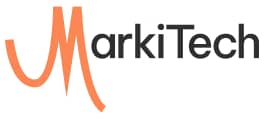What better way to start this blog than by quoting from Alvin Toffler’s 1970 book “Future Shock”: “future shock” [is] a way of describing the social paralysis induced by rapid technological change…”. And in defining the components of this “shock”, Toffler prophetically included information overload as a major influencer.
That was 45 years ago. Toffler believed that the human mind grows linearly and is able to adapt to a linear growth in technology; however, over the past 70 years (well, 115 if you account for the fact that this statement was made 45 yrs ago), technology has grown at an exponential rate, led mostly by the information revolution. One would expect, with the rapid adoption of smart phones and tablet computers and the expansion of free Wi-Fi, hotspots, and reliable 4G, the “always on” world we live in would be one of severe psychological disorientation and paranoia. And yet, this is one prophesy Toffler surprisingly got very wrong.
Well, Toffler’s definitions have been around for nearly half a century now, so we don’t need to go over them again. But take a look around you in any public location, a coffee shop, a supermarket, on a commuter train or the public square, and you will find people accessing the web on a constant basis. A 2011 AOP (Association of Online Publishers) website usage study showed that the average Western world internet user visited 2,518 web pages across 81 domains and 53 sessions in November 2011. This was 4 years ago. And that’s a lot of content! For just one not-very-cold-or-lonely month. Users of information – dare I continue to call it overload – don’t seem to be overloaded. In fact, the more content that is being lobbed at them, the more they are lapping it up.
Ah, but!! Toffler will not be so easily discounted. The corollary of this information tsunami is that the amount allocated by the average user to each content unit is declining as content volume explodes. A recent Pew Internet study (2012) in the US, while confirming the benefit students derive from instant access to a wealth of information from numerous sources, also alerted publishers to the fact that the students’ attention span and desire for in depth analysis is consequently diminished. We have discussed in previous blogs as well that the current generation of internet consumers – the Millennials – live in a world of “instant gratification and quick fixes” which leads to a “loss of patience and a lack of deep thinking”. In a short, sweet sound-bite (preferably in Tom Hank’s panicked voice): “Online publishers! We have a problem”!!
In a world where you target audience demands instant gratification and – horror of horrors – actually has that gratification available to it in the form of multiple alternative websites just a click away, you need to find ways to grab your user’s attention and keep it for long enough to get your message across. Because if you don’t, navigating out of your page and on to that of a competitor can now happen in less than a heartbeat.
Right! So now I’ve got you holding your head in your hands and rocking back and forth slowly and quietly humming “Old McDonald had a farm”, wondering why you didn’tgo into farming when your Jessica Simpson lookalike ex-girlfriend and her dad had offered to take you into the family business. And this is why; if you do what I’m about to tell you (for free, it so happens), your website willget the hits and attention it deserves.
Speed – before you’ve even started doodling the layout of your web pages, you need to KNOW that the page will load ASAP! According to some studies, you have between 1 to 5 seconds (yeah!) before 32% of consumers, spoiled for choice as they are, have abandoned you. slow sites between one and five seconds. So if you reduce page size, you can improve bounce rate by up to 30%; and that’s not even a crafty trick.Even a 1 second delay in page load time can result in 11% fewer page views, 16% decreased customer satisfaction and 7% lost conversions.
Put your best bits up front – Your website is your bakery window, so it should logically have your best pastries proudly displayed there. Include key information upfront to convince the user to read on rather than exit to another information source. By deciding what you want the reader to take out of a page, you can tailor your upfront copy accordingly.
Short and punchy with the content – The modern reader hates paragraphs; too many neurons to engage. Just seeing the scroll-bar shrink into oblivion can be enough for them to not even start reading a page. Instead, you’re better off using bullet point formats to make your USP stand out and be easily digestible. Just make key information easy to locate and eye catching, and you’re good to go. Let the details spill onto secondary pages.
Lead them with descriptive sub-headings – free your users to jump to the appropriate section if they wish, and help them scan the page to try and pick out the piece of information they are looking for. They’re going to do that anyway and if, by understanding their web-scanning habits you enable users to easily navigate your content and find the relevant section for them, you’re only helping yourself retain their attention.
Make it eye-catching – After all, this iswhat you’re trying to achieve, to catch their eye. Use rich media and alternative content presentation to keep users attention. Novelty and the presentation of something that is new and unexpected is one of the key elements of the Reticular Activation System (RAS) which focuses attention. Playing to this trigger through the representation information in alternative forms will help you get your message across effectively. Videos, images, info-graphics all deliver information more effectively than text that drones on.
Present information in a logical, sequential pattern – another element of RAS, by presenting information in a logical sequence helps to keep the attention of the user and allows you to take them through some logical steps to conclusion and get all of your key points across.
Give it to ‘em straight – Provide the information your reader wants and needs, but no more. Its natural for you to want to tell your reader everything right there. But if they’re wading through a porridge pot of information, you’re actually losing their attention and, in the final analysis, them. So, if it’s a sale you’re looking to make, stop yakking when they’ve got to option to purchase. They’ve made their decision; they don’t need to be sold to anymore. Its time for you to move to the cash register….
… and keep that register open – once you’ve got them to the purchase decision, show them where to go to finalize the purchase. So before you start rubbing your greedy little hands together, you first need to hold the user’s hand and take him to the register. Again, understanding how users scan and view web pages will aid in where and how you should present your calls to action.
Use the analytics – there’s oceans of data out there on bounce rates, pages visited, time on site, time on page and many other measures that you can use to optimize your approach to content. For extra fee, the leading analytics providers can also show you “user click” or “mouse hover” concentrations within your page, telling you what your users were looking at and how you can tailor your pages accordingly.
And with these crafty tools, you can be sure your personal “Jessica Simpson” will return to you, and ask you to develop a website for her business. Given that its more than likely that she’s by now branched off into the intimate fashion line, you’ll need to make sure there are very few words, lots of videos and nice pictures of her best wares, and frequent pointers to easy-to-use options to close the deal. After all, you don’t want to lose Jessica to another developer all over again.
Written by Khurram Jamil Butt Aka KJB, Content Marketing Manager @ MarkiTech
Edited by Nauman Jaffar, CEO, MarkiTech
At MarkiTech, we are digital marketing agency focused on technology products and services. We excel in providing end to end online marketing services, support and training coupled with our background and passion for technology. We help you improve your online brand presence by our unique techniques that results in growth in web traffic and effective leads using digital as your channel. Connect with us at nauman.jaffar@markitech.ca; for free 30 min consultation and assessment.
[cta]


